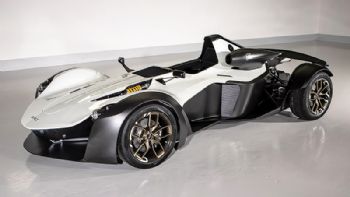
Liverpool-based Briggs Automotive Co (BAC —
www.bac-mono.com), the manufacturer of the recently launched Mono R, has highlighted the role additive manufacturing played in both the design and production of its latest super-car.
When faced with delays to the design process of an essential airbox, the team used Stratasys FDM 3-D printing to produce fully functional prototypes in record time and improve the vehicle’s on-road performance.
The Mono R — weighing just 555kg — is the company’s most complex car to date, and it is the first production car in the world to in-corporate the use of graphene-enhanced carbon fibre in every body panel.
In order to meet the necessary criteria, the design had to be lighter, more efficient and slicker than any previous super-car.
One challenge was the design and testing of the Mono R’s innovative air intake. It quickly became apparent to the design team that creating a prototype using traditional machining was simply unfeasible.
BAC design director Ian Briggs said: “The lead time to produce one prototype of the airbox using traditional machining methods was longer than two weeks. If there were any problems with the prototype produced, then any design iterations could double the turnround time; this was a delay we just couldn’t afford.”
The team at BAC considered additive manufacturing to be the ideal solution and sought the help of Stoke-based Tri Tech 3D (
www.tritech3d.co.uk) — a Stratasys UK platinum partner. Using a Stratasys F900 Production 3-D printer, the team produced the airbox in just a few hours.
It was then fitted to the car and put through its paces. Mr Briggs said: “Access to quick industrial-grade additive manufacturing was a game-changer for this development process.
“Within hours, we were able to produce an accurate 3-D printed prototype of the airbox and install it on the car for testing.
“This enabled us to reduce our design-to-manufacture time significantly.”